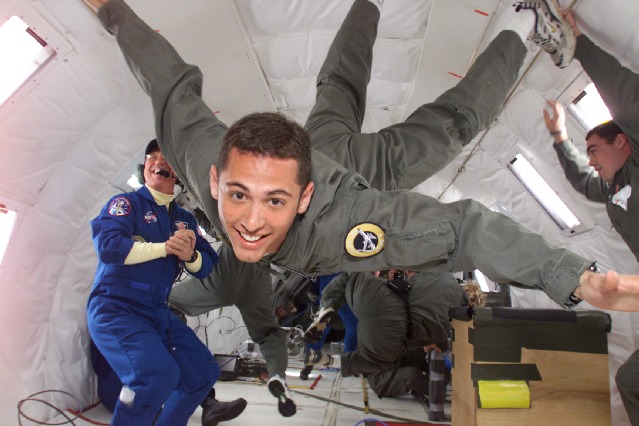|
As you can see in the picture, the airplane first accelerates upward, in this phase the passengers experience a force of almost their doubled body weight, and then it follows the flight path that resembles the one of a thrown stone.
During this time the airplane is in free fall and with it all passengers and equipment, thus being weightless. The pilot only corrects the flight path to overcome drag.
When the airplane is falling down again and reaching a defined angle of inclination, the pilots go into recovery, where again the passengers experience a doubled gravity force. This is repeated up to 30 times.
Unfortunately those roller coaster maneuvers lead to nausea in some passengers, that's why those airplanes also have earned the nickname "Vomit comet". This nausea occurs because the changes in gravitational force confuses the sense of balance. For this reason the participants of such flights can take airsickness medication if they wish.
By the way, if you go over a bump with your car or jump over a hill with your skis, you have the same physical effect. There too you are weightless (remains only the question if you feel it)
How does that feel like? Here you find a try to describe my own experience.
also see:
Space tourism
Air Zero-G
Austrian Parabelteam (german)
European Space Tourist (german)
Zero Gravity Corp.
The Russian Cosmonaut Training Center
ESA Fly your thesis programme
|

The graphics above show the schematics of a parabolic maneuver. Usually on scientific flights this maneuver is repeated app. 30 times, on the parabolic flights that are done for tourists in Europe, the USA and Russia they fly around 15 parabolas.

The A 310 Zero-G, the current zero-g airplane of the European Space Agency ESA, at the beginning of a parabola. This picture is real! (Copyright: Novespace)

"I can fly, isn't that wonderful?" this young man, a participant of a NASA student parabolic flight campaign, seems to say.
|



